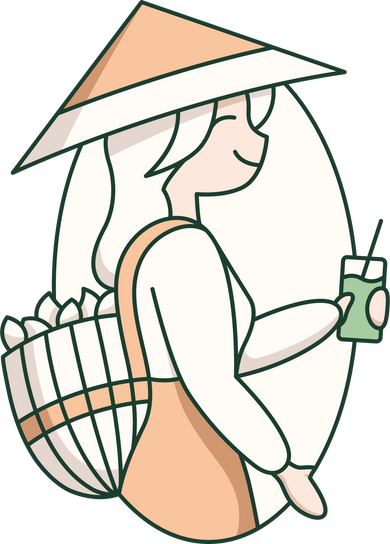L'Enchanteur Refill pack - Ceremonial Matcha
Les bienfaits du matcha



🇯🇵 Origin: Nagasaki, Japan
🍵 Cultivar: Yabukita
😋 Flavors: Umami, vegetal, poppy
💚 Why you'll love it: its strong Asian plant profile



🇯🇵 Origin: Nagasaki, Japan
🍵 Cultivar: Yabukita
😋 Flavors: Umami, vegetal, poppy
💚 Why you'll love it: its strong Asian plant profile
Toute commande passée AVANT 14 h est expédiée le jour même.
Livraison France Métropolitaine 🇫🇷
Livraison Belgique, Luxembourg & Espagne 🇧🇪🇳🇱🇪🇸🇱🇺
Livraison Pays Bas 🇳🇱
Livraison Suisse 🇨🇭
Livraison Italie & Portugal 🇮🇹🇵🇹
Our L'Enchanteur Ceremonial Matcha is harvested in Nagasaki, on the island of Kyushu in Japan by farmers with traditional know-how .
Their fertilizers are organic, made from rapeseed and rice lees. They do not use pesticides for their first-harvest Matcha tea, which includes the Enchanteur tea. However, since their plots border non-organic plots, they cannot obtain organic certification.
This excellent quality ceremonial matcha is infinitely sweet and without any bitterness .
Naturally very rich in vitamins, minerals, trace elements, amino acids and powerful antioxidants, matcha is a long-lasting source of energy that:
100% Ceremonial Grade Matcha Tea.
Ideally, store your matcha at a temperature below 20° , with the bag tightly closed and in a dry place.
It will thus retain all its nutritional and taste qualities for up to 3 to 4 months after opening.
The Nōka Matcha tip: the refrigerator is a great option.
It's very simple! Simply place the desired amount of matcha in a bowl (usually 1 to 2 grams). Then, add hot water, between 40 and 70 milliliters, and mix with the bamboo whisk to avoid lumps! And there you have it, all you have to do is pour the mixture into your N ō ka Matcha glass and enjoy your superb matcha tea.
If you want more advice, we have created a complete guide for you in the Preparation section.
Matcha tea preparation differs from traditional infusions, where the tea leaves are infused and then removed. In the case of matcha, the tea powder is mixed directly with hot water, so the tea leaves are consumed along with the drink.
Au Japon, le thé est généralement produit à partir de plusieurs variétés sélectionnées de théiers (cultivars).
On parle de single cultivar lorsque seulement un cultivar est utilisé pour produire un thé. De la même façon, un thé single origin provient d’une seule et même région de production.
Les thés single cultivar et single origin sont l’expression d’un terroir, et reflètent le caractère vivant et fluctuant du thé. En effet, ils ont la particularité de présenter quelques variations gustatives avec chaque nouvelle récolte. A la manière du vin, certains amateurs de thé apprécient découvrir chaque année les nouveaux crus. Chez Noka Matcha, l'Enchanteur est un single cultivar (Yabukita)
A la manière du vin, dont le profil aromatique est fortement influencé par le “cépage”, c’est-à-dire la variété des raisins sélectionnés pour le produire, le goût du matcha dépend de la variété des théiers utilisée. On appelle ces variétés spécifiques “cultivars”.
Pour produire du matcha, il n’est pas rare que le thé brut, issu de différents cultivars et plantations, soit assemblé par un maître de thé pour obtenir un profil aromatique unique et stable au fil des différentes récoltes. C’est ce qu’on appelle un “blend”, un mélange.
L’intérêt du blend est donc de garantir aux consommateurs de retrouver chaque année un thé aux qualités gustatives identiques. Ils peuvent compter sur une référence de matcha qui leur a plu, sans prendre de risque l’année suivante.
Au Japon, le cultivar le plus populaire est le Yabukita, en raison de sa grande adaptabilité à tout type d’environnement, et de sa résistance au froid.

Cultivated and harvested using traditional Japanese ancestral methods, Nōka Matcha will take you on a journey to the Land of the Rising Sun.

PAIEMENT SÉCURISÉ
LIVRAISON 24-48H
Service client français
LIVRAISON À DOMICILE
Your cart is currently empty.